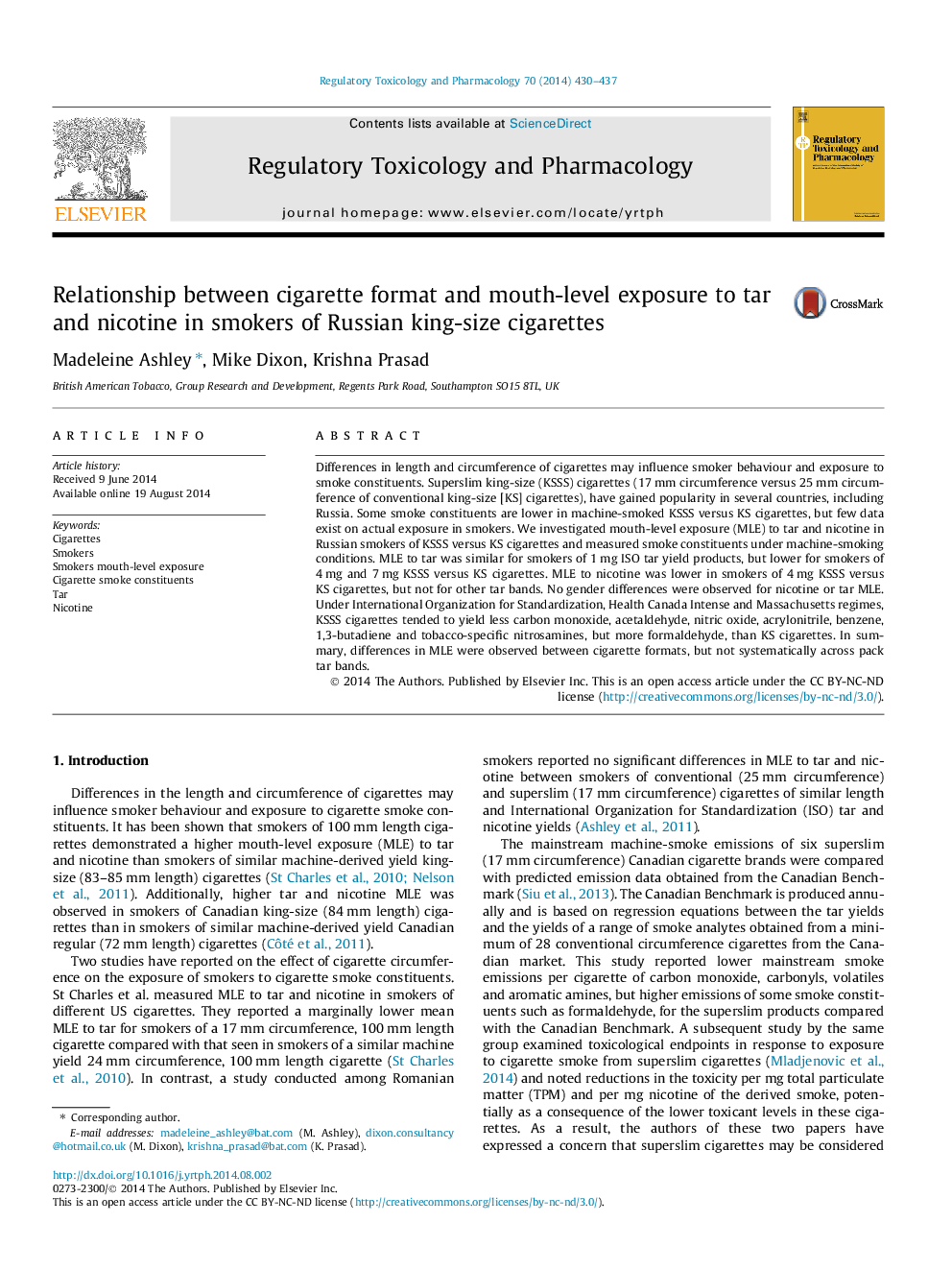| Article ID | Journal | Published Year | Pages | File Type |
|---|---|---|---|---|
| 5856937 | Regulatory Toxicology and Pharmacology | 2014 | 8 Pages |
Abstract
Differences in length and circumference of cigarettes may influence smoker behaviour and exposure to smoke constituents. Superslim king-size (KSSS) cigarettes (17Â mm circumference versus 25Â mm circumference of conventional king-size [KS] cigarettes), have gained popularity in several countries, including Russia. Some smoke constituents are lower in machine-smoked KSSS versus KS cigarettes, but few data exist on actual exposure in smokers. We investigated mouth-level exposure (MLE) to tar and nicotine in Russian smokers of KSSS versus KS cigarettes and measured smoke constituents under machine-smoking conditions. MLE to tar was similar for smokers of 1Â mg ISO tar yield products, but lower for smokers of 4Â mg and 7Â mg KSSS versus KS cigarettes. MLE to nicotine was lower in smokers of 4Â mg KSSS versus KS cigarettes, but not for other tar bands. No gender differences were observed for nicotine or tar MLE. Under International Organization for Standardization, Health Canada Intense and Massachusetts regimes, KSSS cigarettes tended to yield less carbon monoxide, acetaldehyde, nitric oxide, acrylonitrile, benzene, 1,3-butadiene and tobacco-specific nitrosamines, but more formaldehyde, than KS cigarettes. In summary, differences in MLE were observed between cigarette formats, but not systematically across pack tar bands.
Keywords
Related Topics
Life Sciences
Environmental Science
Health, Toxicology and Mutagenesis
Authors
Madeleine Ashley, Mike Dixon, Krishna Prasad,
